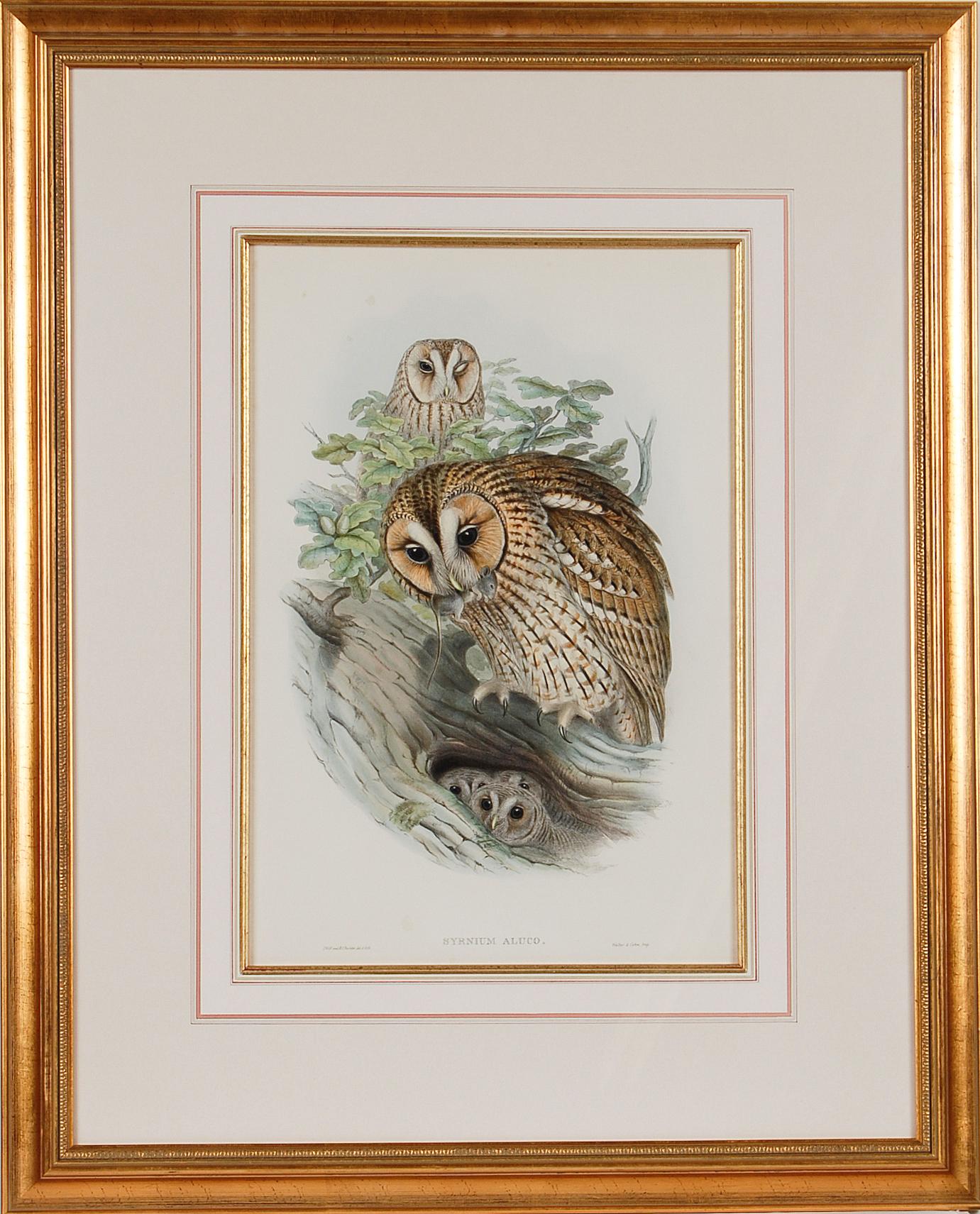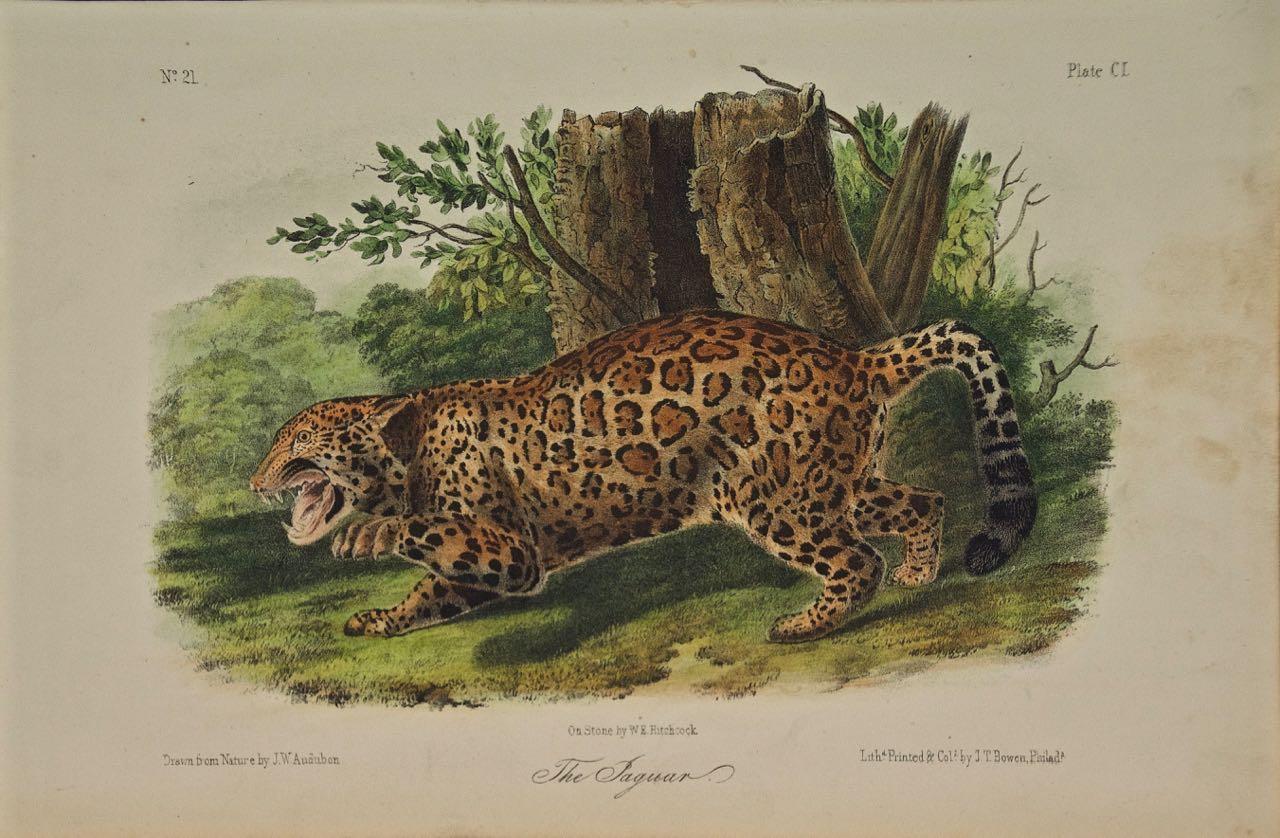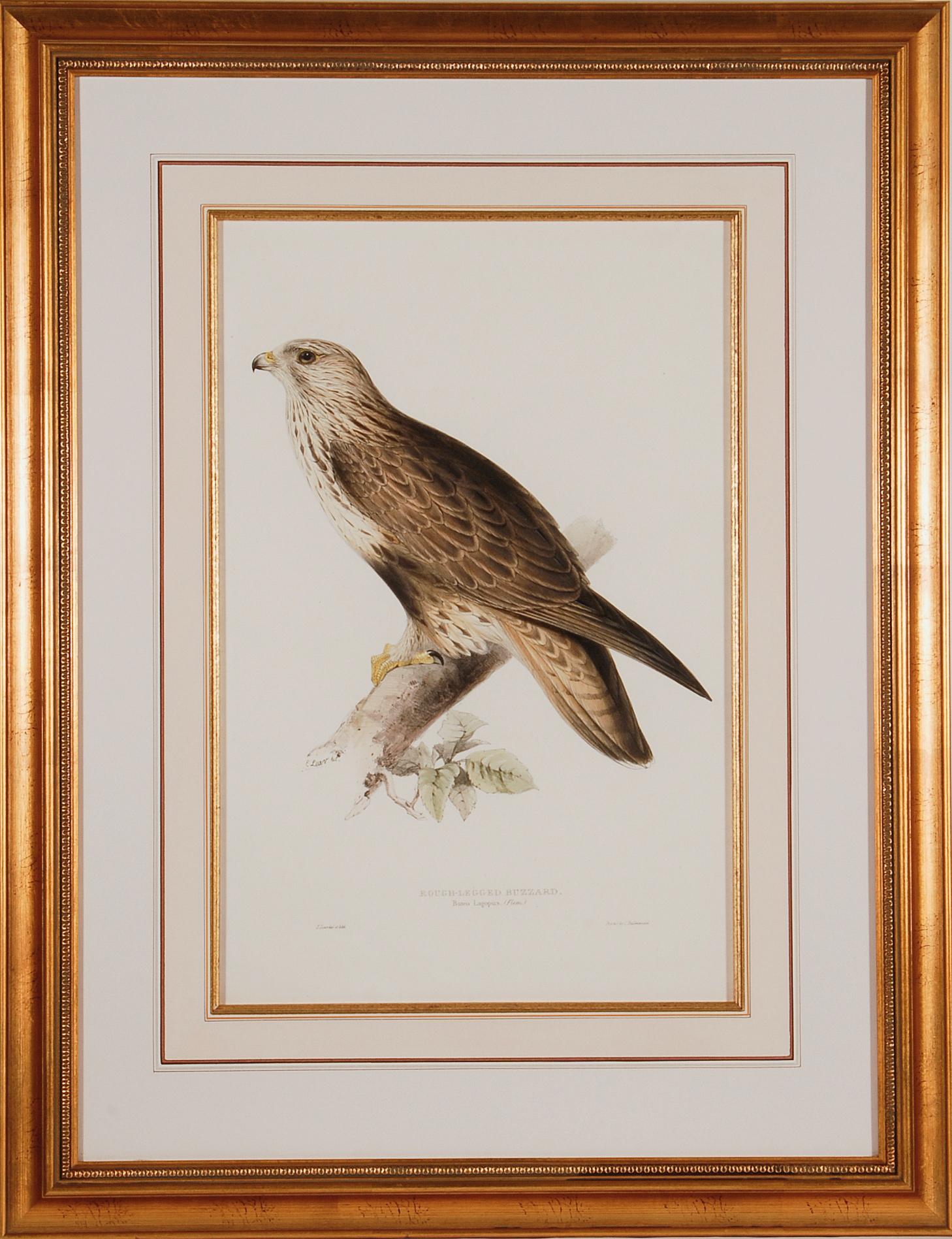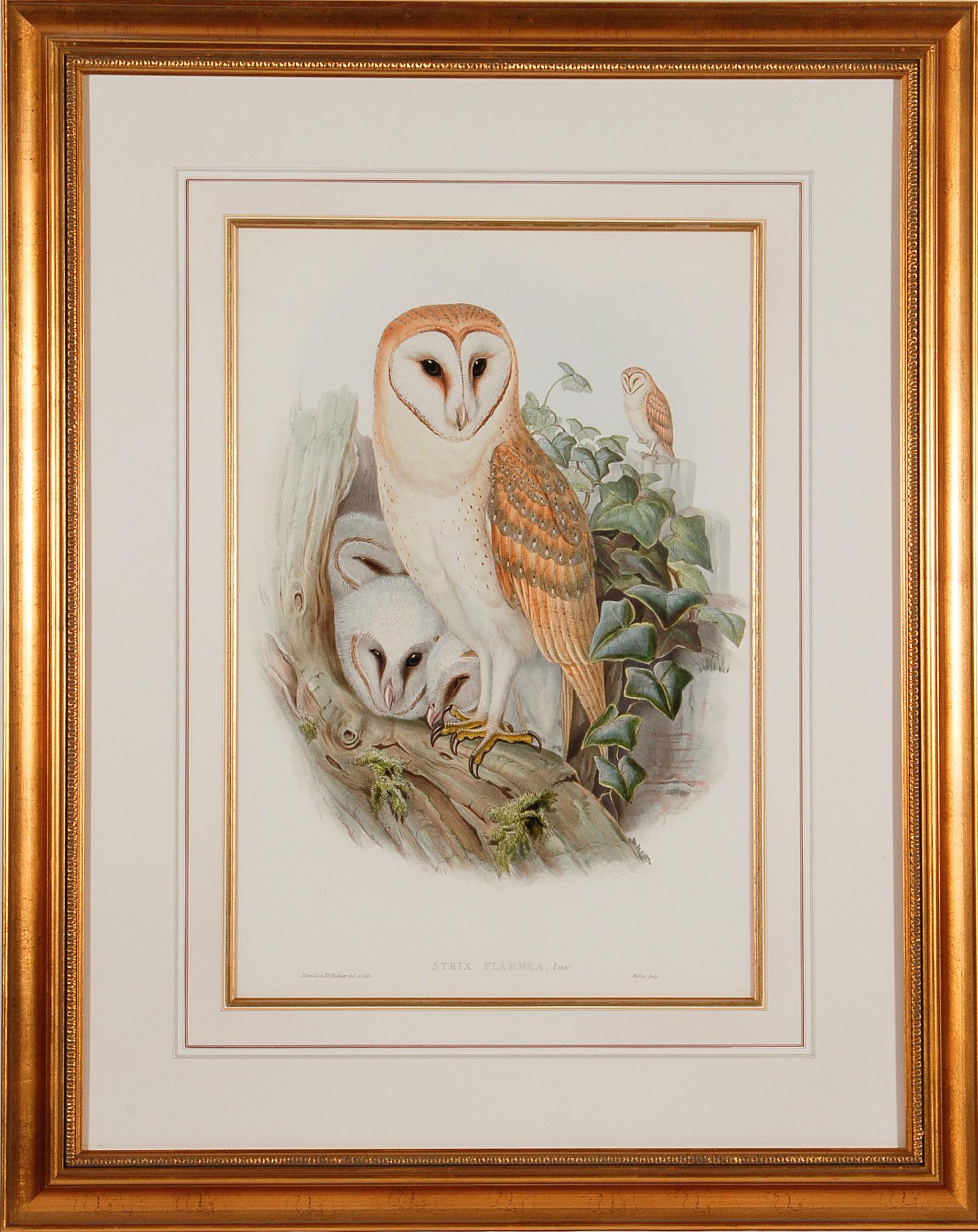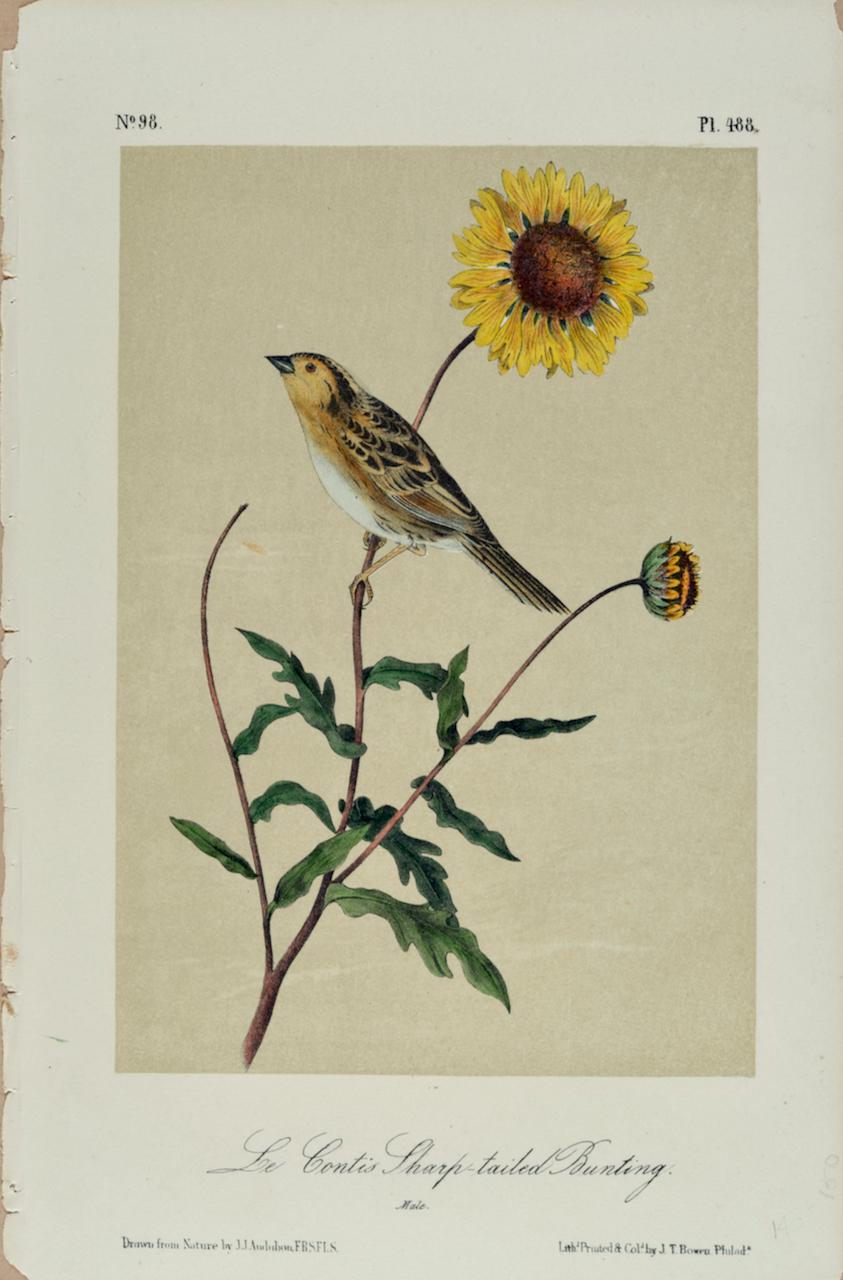After John James Audubon"Washington Sea Eagle": An Original Audubon Hand-colored Lithograph 1856
1856
About the Item
- Creator:
- Creation Year:1856
- Dimensions:Height: 10.5 in (26.67 cm)Width: 6.75 in (17.15 cm)
- Medium:
- Movement & Style:
- Period:
- Framing:Framing Options Available
- Condition:
- Gallery Location:Alamo, CA
- Reference Number:
After John James Audubon
John James Audubon was an American ornithologist, naturalist and painter. His combined interests in art and ornithology turned into a plan to make a complete pictorial record of all the bird species of North America. Audubon was notable for his extensive studies documenting all types of American birds and for his detailed illustrations that depicted the birds in their natural habitats. His major work, a color-plate book entitled The Birds of America (1827–1839), is considered one of the finest ornithological works ever completed. Audubon is also known for having identified 25 new species. He is the namesake of the National Audubon Society and his name adorns a large number of towns, neighborhoods, and streets in every part of the United States. Dozens of scientific names first published by Audubon are currently in use by the scientific community. Audubon made some excursions out West, where he hoped to record Western species he had missed, but his health began to fail. In 1848, he manifested signs of senility or possibly dementia from what is now called Alzheimer's disease, his noble mind in ruins. Audubon died at his family home in northern Manhattan on January 27, 1851. He is buried in the graveyard at the Church of the Intercession in the Trinity Church Cemetery and Mausoleum at 155th Street and Broadway in Manhattan, near his home. An imposing monument in his honor was erected at the cemetery, which is now recognized as part of the Heritage Rose District of NYC.
- ShippingRetrieving quote...Ships From: Alamo, CA
- Return PolicyA return for this item may be initiated within 7 days of delivery.
- Tawny or Brown Owl: A Framed Original 19th C. Hand-colored Lithograph by GouldBy John Gould and Henry Constantine RichterLocated in Alamo, CAThis is a framed original 19th century hand-colored folio-sized lithograph entitled “Syrnium Aluco" (Tawny or Brown Owl) by John Gould, from his "Birds of G...Category
Mid-19th Century Naturalistic Animal Prints
MaterialsLithograph
- "The Jaguar", an Original 19th C. Audubon Hand Colored Quadruped LithographBy John James AudubonLocated in Alamo, CAThis rare original John James Audubon hand-colored royal octavo lithograph is entitled "The Jaguar", No. 21, Plate CI, 101 from Audubon's "Quadrupeds of North America". It was drawn ...Category
Mid-19th Century Naturalistic Animal Prints
MaterialsLithograph
- Rough-legged Buzzard: 19th C. Hand-colored Lithograph by J. Gould & Edward LearBy Edward LearLocated in Alamo, CAThis is an original 19th century hand-colored folio-sized lithograph entitled "Archibuteo Lagopus" (Rough-Legged Buzzard) by John Gould and Edward Lear, from Gould's "Birds of Great Britain", published in London between 1862 and 1873. The print depicts an adult Rough-Legged Buzzard perched on a branch of a tree looking to the left. This beautiful framed Gould hand-colored lithograph is presented in a gold-colored wood frame and cream-colored French mat, embellished by a gold-colored fillet. The frame measures 33" high, 25.5" wide and 1.25" thick. It is in excellent condition There are several other unframed Gould bird lithographs available on our 1stdibs and InCollect storefronts. Two or more of these striking lithographs would make an attractive display grouping. A discount is available for purchase of a set depending on the number. These additional Gould hummingbirds may be viewed by typing Timeless Intaglio in the 1stdibs or InCollect search field to be taken to our storefront. John Gould (1804-1881]) was an English ornithologist and artist. He, like his American contemporary John James Audubon, published a number of books on birds in the mid 19th century, illustrated by hand-colored lithographs. His wife and fellow artist, Elizabeth Gould, and several other artists including Edward Lear and Henry Constantine Richter produced lithographs for his various publications. He has been considered the father of bird study in Australia and the Gould League in Australia is named after him. Charles Darwin referenced Gould’s work in his book, "On the Origin of Species" and Gould named a bird after Darwin; "Darwin's finches". Gould began his career in London as a taxidermist, but in 1827 became the first curator and conservator at the museum of the Zoological Society of London. In this position naturalists brought him collections of birds from all over the world. He began creating drawings and eventually hand-colored lithographs with his wife and Edward Lear, which were the basis for his first publications. Darwin brought him specimens from the Galapagos Islands, including 12 species of finches which had never been described. In 1838, Gould and his wife travelled to Australia and their work led to the seven volume publication of “The Birds of Australia”. Gould had a fascination for hummingbirds and collected specimens of 320 varieties before ever seeing a live hummingbird on a trip to the United States in 1857. He eventually published “A Monograph of the Trochilidae, or Family of Humming-birds". Other large publications include: "The Birds of Europe"," A Monograph of the Ramphastidae, or Family of Toucans”, “A Synopsis of the Birds of Australia, and the Adjacent Islands”, “A Monograph of the Odontophorinae, or Partridges of America”, “The Birds of Asia”, “The Birds of Great Britain” and "The Birds of New Guinea and the Adjacent Papuan Islands, including many new species recently discovered in Australia". John Gould (1804-1881) was a British ornithologist and illustrator who is best known for his monumental work, "The Birds of Europe," published between 1832 and 1837. Gould was born in Lyme Regis, Dorset, England, and began working as a taxidermist and natural history dealer in London in the 1820s. In 1827, Gould was appointed the first curator and preserver of birds at the Zoological Society of London, where he began to build his collection of specimens and began to study the birds of the world. He published his first monograph, "A Century of Birds from the Himalaya Mountains," in 1831, which included 80 plates of Himalayan birds. Gould continued to publish numerous volumes on the birds of the world throughout his life, including "The Birds of Australia" (1840-1848) and "The Birds of Great Britain" (1862-1873). His works were highly regarded for their accuracy and detail, and he was one of the most prominent ornithologists of his time. In addition to his work as an ornithologist, Gould was also a successful businessman, and he used his profits to fund expeditions and to support the scientific community. He was elected a Fellow of the Royal Society in 1843, and he was awarded the Royal Medal...Category
Mid-19th Century Naturalistic Animal Prints
MaterialsLithograph
- Barn Owl Family: A Framed Original 19th C. Hand-colored Lithograph by GouldBy John Gould and Henry Constantine RichterLocated in Alamo, CAThis is a framed original 19th century hand-colored folio-sized lithograph entitled “Strix Flammea” (Barn Owl) by John Gould, from his "Birds of Great Britain", published in London between 1862 and 1873. The print depicts an adult Barn Owl perched on a log its three baby owls to the left. Another adult owl in the background on the right, presumably a male, watches over his family. There are leaves on the right contributing to this pleasant landscape composition. This striking framed Gould...Category
Mid-19th Century Naturalistic Animal Prints
MaterialsLithograph
- Le Contis Sharp-tailed Bunting: Original Audubon Hand-colored Bird LithographBy John James AudubonLocated in Alamo, CAThis is an original 19th century John James Audubon hand-colored lithograph entitled "Le Contis Sharp-tailed Bunting, Male", No. 98, Plate 488 from Audubon's "Birds of America, litho...Category
Mid-19th Century Naturalistic Animal Prints
MaterialsLithograph
- American Coot: An Original 19th C. Audubon Hand-colored Bird LithographBy John James AudubonLocated in Alamo, CAThis is an original 19th century John James Audubon hand-colored lithograph entitled "4128 Audubon, Purple Gallinule, Adult Male, Spring Plumage", No. 61, Plate 303 from Audubon's "B...Category
Mid-19th Century Naturalistic Animal Prints
MaterialsLithograph
- Terriers No. 2Located in Columbia, MOTerriers No. 2 1883-84 Chromolithograph 8.5 x 11 inchesCategory
1880s Naturalistic Animal Prints
MaterialsLithograph
- Terriers No. 1Located in Columbia, MOTerriers No. 1 1883-84 Chromolithograph 8.5 x 11 inchesCategory
1880s Naturalistic Animal Prints
MaterialsLithograph
- Dalmation & Bull TerrierLocated in Columbia, MODalmation & Bull Terrier 1883-84 Chromolithograph 8.5 x 11 inchesCategory
1880s Naturalistic Animal Prints
MaterialsLithograph
- American Crow 1858 Chromolithograph by J.J. Audubon Plate, Julius Bien EditionBy John James AudubonLocated in Paonia, COAmerican Crow by J.J. Audubon from his Birds of America folio shows an adult male crow in a Black Walnut bush with a nest of a Ruby-Throated Hummingbird in a branch below the crow. This original chromolithograph plate no. 226 is in good condition with a repairable water mark in the image on the left side as can be seen in the photos. The ” Birds of America” by John James...Category
1850s Naturalistic Animal Prints
MaterialsLithograph
- New BeginningsBy Joseph RaffaelLocated in San Francisco, CAArtist: Joseph Raffael (American, 1933-2021) Title: New Beginnings Date: 1982 Medium: Color lithograph Sheet size: 33.5 x 31.75 inches Framed Size 38 x ...Category
1980s Naturalistic Landscape Prints
MaterialsLithograph
- DachsundsLocated in Columbia, MODachsunds 1883-84 Chromolithograph 8.5 x 11 inchesCategory
1880s Naturalistic Animal Prints
MaterialsLithograph
